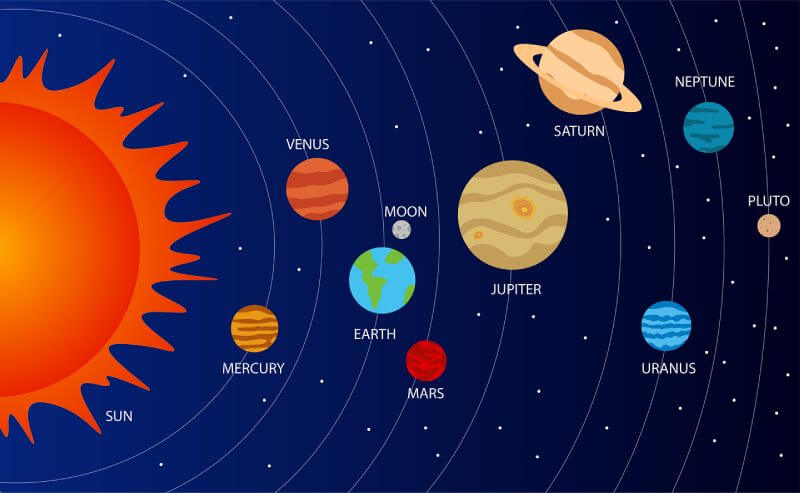When you look up at the night sky you see the moon, the stars, and several large planets masking as stars. Moons are very common in our universe and many of the planets in our solar system have moons including Jupiter, Saturn, Earth, Mars, Neptune, and Uranus. Moons are natural satellites that orbit around planets and each of them is just as unique as the planet they are orbiting.
Let’s learn more about the unique moons that exist in our solar system – at least the moons that we know of. Scientists are constantly searching for more moons and they are certain that many have not been discovered yet.
Why Do Planets Have Moons?
Every moon has its own origin story, but the same basic science is behind every moon. Planets have moons due to the process of gravitational interactions within our solar system.
To put it simply, during the early stages of a planetary system’s formation, as a star forms, it is surrounded by a rotating disk of gas and dust. Within this disk, solid particles collide and merge, gradually forming larger bodies.
Many of these bodies become planets that start orbiting around the star, while others become moons and get sucked into the gravitational pull of the planets instead of the star. The process is known as accretion.
Another way that moons form is when asteroids or other celestial objects fly too close to a planet, and the planet captures them with its gravitational pull. The celestial object will then become the planet’s moon and begin orbiting around the planet. Captured moons typically have irregular orbits, are often smaller in size, and have extraordinarily unique shapes.
Does Every Planet Have a Moon?
We don’t believe so. As far as we know, Mercury and Venus do not have moons. Of course, they could have moons that we have just not discovered yet, but as of right now, we do not believe that they have moons orbiting them.
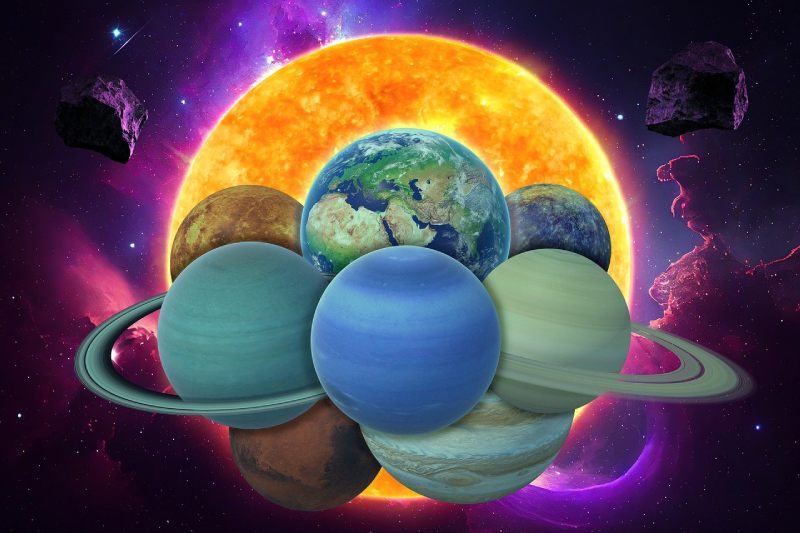
All of the other planets, including Earth, Mars, Jupiter, Saturn, Uranus, and Neptune, all have moons that orbit around their parent planet. Even little Pluto (formally known as the 9th planet) has moons orbiting around.
Earth and Its Lone Moon
Did you know our moon doesn’t have a name? It is just called the moon. While all of the other moons have cool names. The Earth’s moon was discovered since the beginning of the human race (it’s kind of hard to miss). However, recorded discoveries of the moon’s characteristics didn’t come until around 3000 B.C. when ancient civilizations such as Babylonians talked about the lunar phases.
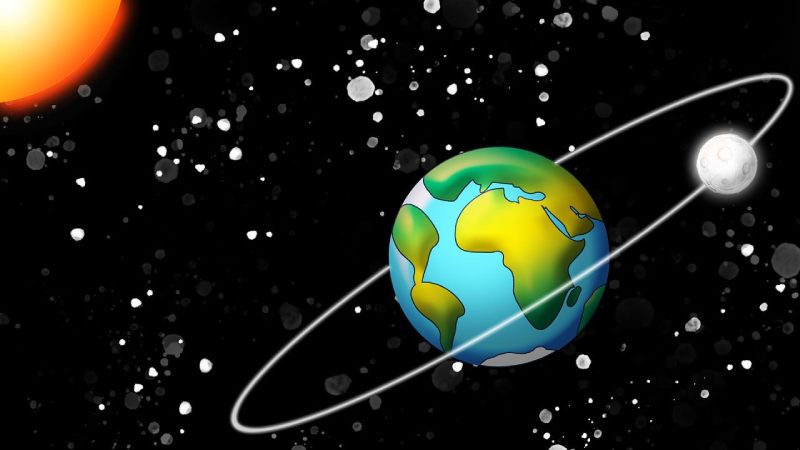
Timeline of the Moon’s Discoveries
● Galileo: In 1609, Galileo Galilei created a telescope that was able to view the moon’s surface. He discovered that the moon was not a perfect sphere, nor was it smooth, as previously believed. Instead, he noticed that there were mountains, valleys, and craters.
● Giovanni Riccioli & Francesco Maria Grimaldi: Two Italian astronomers in the 17th century created detailed maps of the moon and named many of the features.
● Lunar Mission: The first up-close observations of the moon were successfully completed by the Soviet Union. Their Luna 2 mission became the first human-made object to reach the moon in 1959. Then in 1966, Luna 9 became the first spacecraft to achieve a soft landing on the moon.
● Apollo Missions: The Apollo program, conducted by NASA, is one of the most significant missions in all of history when we were able to land the first humans on the moon in 1969.
In recent news, scientists have studied the other side of the moon and are planning to colonize the moon by setting up infrastructure so astronauts can live there for extended periods.
The Red Planet’s Moons
Mars has two moons named Phobos and Deimos. Both of the moons are extremely small and have odd shapes to them, leading scientists to believe that they were actually captured asteroids.
Phobos is much larger than Deimos and sits closer to Mars. Since Deimos is further away, the orbit is much larger, and it has to travel a much greater distance.
Jupiter’s Many Moons
Jupiter has the second most moons in the entire solar system. Scientists believe that many more moons have yet to be discovered, but they believe they have found 80 moons. The four largest moons are called the Galilean moons: Lo, Europa, Ganymede, and Callisto. Scientists are constantly intrigued by the moons of Jupiter.
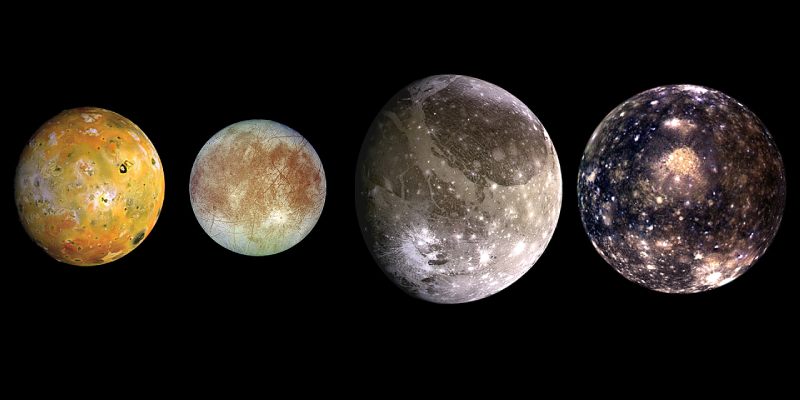
Here are some interesting facts about the largest moons:
● Lo: Known for intense volcanic activity. It has highly active surfaces with countless active volcanos. In fact, it is the most geologically active celestial body in the entire solar system.
● Europa: Believed to have a subsurface ocean beneath its icy crust. Since there is most likely liquid water on its surface, scientists believe that there is a chance for it to sustain some sort of life.
● Ganymede: The largest moon in the entire solar system – surpassing Mercury! Since it is so large, it has its own magnetic field.
● Callisto: This moon is the furthest moon from Jupiter and is known to be heavily cratered and extremely accidental. Scientists believe that Callisto is the most heavily crated celestial body in the entire galaxy.
Scientists still have a lot to learn about Jupiter’s moons since they aren’t even sure if they have discovered all of them!
Saturn Has The Most Moons
Saturn has the most moons in the entire galaxy. In total, the planet has 146 moons (but that number is likely to change). Scientists are constantly scanning the universe for more moons and seeing if there are any more that belong to Saturn.
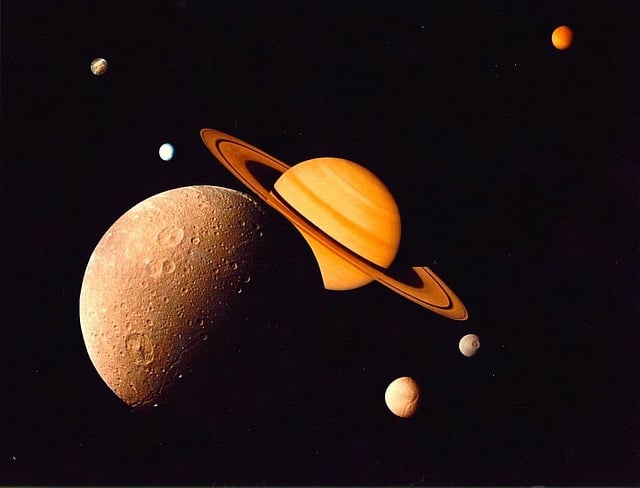
● Titan: The largest of Saturn’s moons and the second-largest moon in our solar system. Titan has a thick, hazy atmosphere and is the only moon known to have a substantial atmosphere.
● Enceladus: An icy moon known for its amazing geysers and water ice erupting from its south pole. Scientists believe that there is a liquid ocean beneath its icy crust.
● Mimas: Referred to as “The Death Star” because it resembles that of the fictional space station from the Star Wars franchise. It has a massive crater called Herschel.
● Lapetus: An intriguing moon that has one hemisphere that is dark and covered in a lay of material thought to originate from other moons and then the other hemisphere that is much brighter.
● Rhea: Saturn’s second largest moon and is heavily cratered.
● Dione: An icy moon with a heavily cratered surface. There is some evidence of past tectonic activity, and it also has a subsurface ocean.
Scientists are especially interested in moons that have subsurface oceans because there is a chance of supporting life. Do you think there are ocean plants or animals?
Uranus and Its Natural Satellites
Uranus has 27 known moons, but like Jupiter and Saturn, there is a chance for more discoveries in the future. Some of the most notable moons are Titania, Oberon, Umbriel, and Ariel. Unfortunately, scientists have not found significant and notable attributes of Uranus’s moons. Most are heavily cratered and many of them have irregular orbiting patterns.
None of Uranus’s moons (at least from what we know) have any type of liquid water on their surface. It would be quite unlikely for any of the moons to be able to sustain life.
Let’s Finish it Up With Neptune’s Orbiting Celestial Bodies
Neptune has 14 moons that orbit around the planet. The most well-known moons are Triton and Nereid.
● Triton: This is the largest of Neptune’s moons and the most famous. It is one of the few moons in the solar system with a retrograde orbit – meaning it orbits in the opposite direction as Neptune’s rotation. Triton is fascinating because it is active with cryovolcanism (volcanic activity involving ice) and unique features like geysers that spew nitrogen gas and dust into space.
● Nereid: The third-largest moon of Neptune. It has a highly eccentric orbit. It can sometimes be extremely far away from Neptune during certain times in the orbit.
Since Neptune is so far away from the Earth, we don’t know everything there is to know about the planet or the moons. It is important to note that additional discoveries will be made and might change what we once thought.
Conclusion
Our solar system is beautiful, complex, and seemingly infinite. Our solar system has 290 moons that have been recorded, but that number is likely to increase as our knowledge of the universe expands. The Earth has the least amount of moons at just one, and then Saturn has the most moons at 146!
It will be amazing to see what the future holds in the discovery of more celestial bodies within our universe. Do you think that we will ever find another planet? How many more moons do you think are out there that we haven’t discovered yet? Only time will tell!

